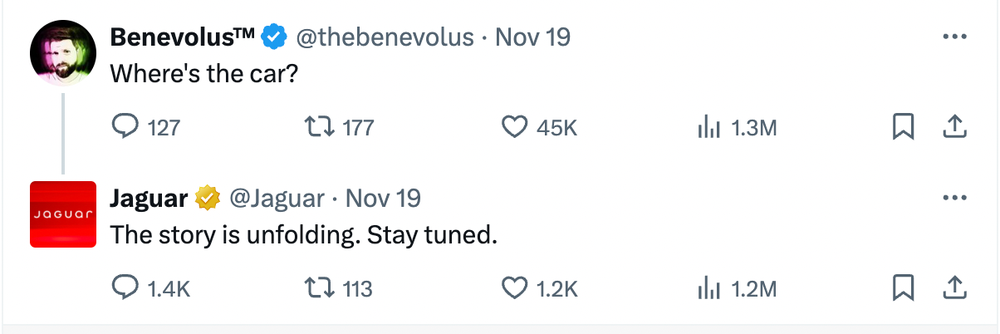Opinions expressed by Entrepreneur contributors are their own.
AI is creating an increasingly data-rich work environment where effective capturing and sharing of institutional knowledge is more important than ever. The importance lies within a criticality for building resilient, agile teams without inefficiencies arising from knowledge gaps that hinder collaboration and slow innovation.
So, how does the power of AI and the importance of preventing knowledge gaps crossover?
As I say, AI is changing things, but more specifically, AI is lessening the possibility of significant knowledge gaps. Emerging as a powerful enabler of smarter, self-sustaining team culture, it is becoming clear that by embedding AI into knowledge-sharing practices, organizations can empower teams to retain, access and utilize insights with unprecedented efficiency. This is clear to me, anyway, but perhaps that is natural due to my position as the founder of Bubbles. My mission? To spread this reality and empower other individuals and teams.
On the team front, we have seen companies strive to bridge knowledge silos for as long as teams have existed. AI-powered tools that capture, organize and distribute information are becoming essential for easing this task. 71% of employees feel they waste too much time in unproductive meetings, where valuable information is shared but rarely retained effectively. AI is addressing this gap, turning knowledge sharing into a structured, ongoing process that benefits every team member and leaves nobody in the dark.
AI as the knowledge gatekeeper
Traditional knowledge sharing relied heavily on meetings, documentation or one-on-one exchanges. While useful, these methods are prone to fragmentation (as established in my deep dive on Ingvar Kamprad’s meeting philosophy), often resulting in knowledge loss. Knowledge loss in this form is damaging, with the HBR reporting that 70% of employees don’t have mastery of skills needed to do their jobs, a trend that underscores the need for more robust and progressive solutions. Here, AI acts as a gatekeeper (a good one), capturing information and keeping it accessible and relevant over time.
AI tools can automatically transcribe meetings, extract key insights and store them in a centralized knowledge hub. This creates a “living” library accessible to any team member at any time. Notably, one report found that 68% of employees are swamped and overwhelmed by workloads and information. By centralizing and condensing knowledge, AI helps prevent this kind of information disconnect, which is particularly valuable for hybrid or remote teams that constantly meet virtually.
Related: Gen Z Talent Will Walk Away — Unless You Try These 6 Strategies
Creating a self-learning culture with AI
AI doesn’t just store information — it learns from it. By analyzing patterns, context and trends within data, AI tools can identify knowledge gaps or highlight emerging or existing areas of strength. The result? The ability to have future learning needs to be predicted and laid out for you. A massive capability, this power to easily support a culture of continuous learning goes a long way toward the culture unfolding and naturally adapting to the company’s evolving goals.
Consider a product team working on a new feature update. Rather than manually sifting through emails and Slack threads, AI-driven tools can compile relevant historical data on similar projects, lessons learned and customer feedback instantly. With that, you are halfway there and working proactively with a continuous learning mindset. According to Gallup, this mindset can increase productivity by 17% and profitability by 21%. Keeping your culture knowledge-centric gives you a competitive edge.
Related: Scammers Stole $48 Billion From Businesses in 2023 — and the Holidays Are Their Favorite Time to Commit the Crime. Protect Yourself Using These 6 Expert Tips.
Reducing information overload with AI curation
With AI-driven knowledge capture comes the risk of information overload. In fact, the average knowledge worker spends 1.8 hours per day searching for information, according to McKinsey. This crazy stat is corroborated by data that reveals that 46% of employees feel burnout in relation to their workload.
AI’s role as a curator becomes essential here, as it categorizes, prioritizes and tailors information based on team and individual needs to provide the right insights at the right time. An example of this can be seen in meeting recording. Traditional recording would result in exactly that – a full recording. Compare that with some of the AI note-takers currently available, and the difference is stark. The necessity to skim through hours of recorded footage has been replaced by quick AI action items and summarized insights that let you progress instantly.
Also, through machine learning, AI can “learn” which types of information are most valuable to specific teams and iterate with that to reduce cognitive load and promote a high-impact focus.
Related: Product Changes Can Backfire — How Tweaks Risk Losing Customers and Revenue
Enhancing knowledge retention in a mobile workforce
Remote and hybrid work has made knowledge retention a unique challenge. However, AI-powered knowledge-sharing tools mean that every team member has access to up-to-date information regardless of location. The result is that 55% of remote workers believe most of their meetings could have been emails, showing how well AI integrates into workforces to optimize core knowledge bases.
Overcoming cultural barriers to AI-driven knowledge sharing
Despite its advantages, implementing AI-driven knowledge sharing requires a cultural shift. Teams must embrace transparency, breaking down silos that hinder knowledge flow. Strong leadership is essential in promoting this shift, along with a clear message founded upon the collective benefit of shared knowledge. A suggestion for leaders is to be open and model this behavior by actively using and contributing to AI-enabled knowledge bases.
It’s also important to address privacy and security concerns. A Cisco report notes that 76% of employees are more comfortable with AI when data privacy policies are clear. To build confidence, organizations can invest in AI tools with strong encryption protocols and restricted access to ensure privacy. After all, 78% of workers using AI in their jobs are bringing their own tools (not company-provided solutions), so work with your team to let AI democratize access to knowledge and create a workplace where everyone contributes to and benefits from collective intelligence. By doing so, you create resilience and protect valuable insights.
In the age of AI, knowledge isn’t just a resource in the hands of a few — it’s a foundational asset accessible to all, driving companies toward a more dynamic, resilient future where knowledge gaps are bridged.
https://www.entrepreneur.com/science-technology/the-surprising-role-ai-plays-in-creating-self-learning-team/482382



 Tom Golisano. Photo by Bobby Bank/Getty Images
Tom Golisano. Photo by Bobby Bank/Getty Images




